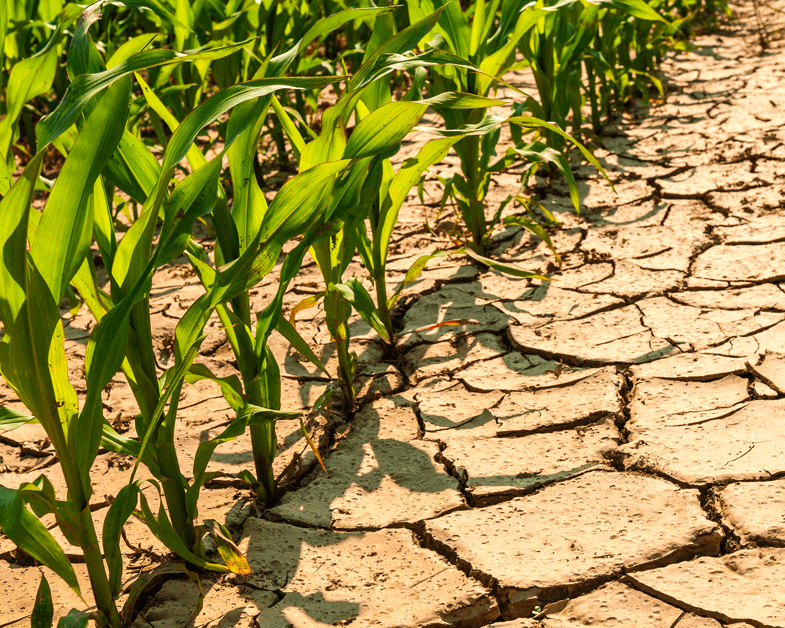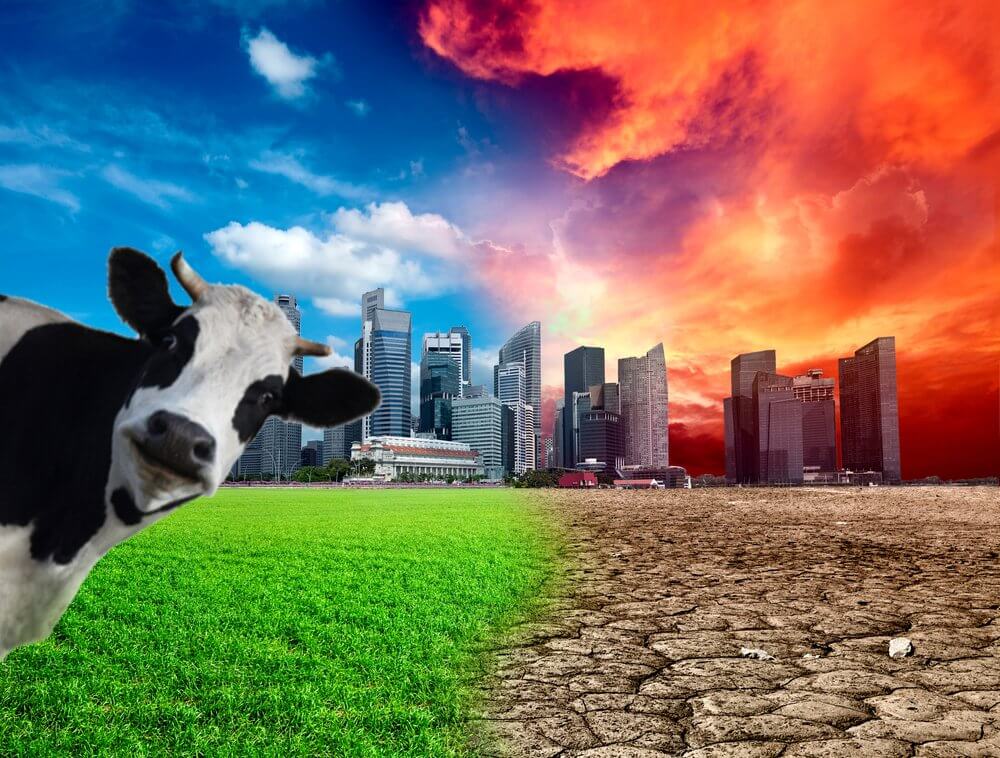But is there one type of agriculture—conventional, organic, “agroecological,” or with the use of genetic engineering—that’s more sustainable? Considering that all agriculture involves land use changes and other environmental alterations that lead to climate change, the answer is—yes, but with caveats.
The Intergovernmental Panel on Climate Change (IPCC) has reported that between 1850 and today, “Human-induced warming reached approximately 1°C (likely between 0.8°C and 1.2°C) above pre-industrial levels in 2017, increasing at 0.2°C (likely between 0.1°C and 0.3°C) per decade.” The IPCC recommends that further increases be held so that the earth’s overall temperature increases to no more than 1.5° C. However, climate scientists (including the IPCC) estimate that under current industrial (and agricultural) activity, global temperatures could rise between 1.5° and 5.5° C over the next 50 to 75 years. The Paris Agreement has a goal of keeping the temperature rise between 1.5° and 2.0° C.
Agriculture is a significant part of the “human induced” part of warming. A number of estimates show agriculture contributes anywhere between nine and 25 percent of greenhouse gases to climate change (the largest contributor is transportation, at about 22 percent). Other estimates show agriculture contributes 48 percent of methane and 52 percent of nitrous oxide from rice fields.

In the US, the federal Department of Agriculture predicts that, in turn, climate change will have an overall deleterious impact on crops and livestock. According to the USDA’s Fourth Annual Climate Assessment:
While some regions (such as the Northern Great Plains) may see conditions conducive to expanded or alternative crop productivity over the next few decades, overall, yields from major U.S. crops are expected to decline as a consequence of increases in temperatures and possibly changes in water availability, soil erosion, and disease and pest outbreaks.
For small-scale farmers in developing countries, the effects of rising temperatures look worse. “Extreme weather events such as droughts, heat waves and flooding have far-reaching implications for food security and poverty reduction, especially in rural communities with high populations of small-scale producers who are highly dependent on rain-fed agriculture,” wrote an international team from Cornell University, CIMMYT in Mexico, the USDA and the World Bank. “Climate change is expected to reduce yields of staple crops by up to 30% due to lower productivity and crop failure.”
Moreover, the Paris goal of 1.5- to 2.0-degree temperature rise may be impossible without changes in food supplies, including agriculture. An Oxford University-led study published in Science stated that major changes in the “food system” will be necessary—the main components they identify as part of this system are:
- Land clearing and deforestation; carbon dioxide (CO2) and nitrous oxide (N2O)
- Production and use of fertilizers and other agrichemicals; CO2, N2O, and methane (CH4)
- Enteric fermentation during production of cows, sheep, and goats; CH4
- Production of rice paddies; CH4
- Livestock manure; N2O and CH4
- Fossil fuels in food production and supply chains; CO2.
A technological crossroads
So, what’s a poor farmer to do? Or even a rich one?
Obviously, it’s necessary to modify production and farming management to mitigate the contribution of greenhouse gases. These modifications may include, as the Cornell-led team wrote:
Adjusting planting time, supplementing irrigation (when possible), intercropping, adopting conservation agriculture, accessing short- and long-term crop and seed storage infrastructure, and changing crops or planting more climate resilient crop varieties.
There are three basic ways farmers can achieve these, and politics has started to make them mutually exclusive: organic, conventional (with genetic engineering), and conventional (without GMOs). Another category, “agroecology,” is either a real, science-based approach or “fightin’ word,” depending on whom you ask.
A recent paper in Nature Communications by a German team claimed that, once its products are priced correctly, organic methods are just as sustainable (in terms of reducing greenhouse gas emissions) as conventional farming, particularly when discussing livestock. Animal products, the authors noted, produced the highest “external” greenhouse gas costs, both for organic and conventional methods, and the lowest costs were organic plant-based products. So, is organic better for GHG overall? The paper implies “yes.”
But other scientists say, “Except for animals, probably not.”

The Nature paper, along with other non-academic initiatives such as the European Union’s “Farm to Fork” and “Green” efforts, which are supportive of organic over conventional (and GMO) for reducing greenhouse gas emissions, ignore several key elements of GHG emission:
- The fact that organic farming lags in yield up to 40 percent behind conventional (with or without GM). This means that to feed the world solely with organic food, more land would have to be converted to farmland to catch up. “Lower yields in organic production cause land-use change effects with significant carbon opportunity costs, which are typically not reflected in such calculations,” said Matin Qaim, Professor of International Food Economics and Rural Development at the University of Göttingen.
- Sequestration of carbon. Accounting for output, “but not the CO2 that plants sequester…would raise the cost of organic production, as conventional here (GM) is done using zero-till, so the sequestration values would be higher,” said Stuart Smyth, associate professor of agriculture and bioresources at the University of Saskatchewan. (However, organic farming’s use of cover crops could boost carbon sequestration.)
- The impact of pests. “I do not see anything in this report that mentions organic farming solutions to difficult pests and pathogens. The idea of making these price adjustments also seems a bit surreal–how will poor EU citizens manage?” asked Kathleen Hefferon, microbiology researcher at Cornell University’s College of Agriculture.
In general, Qaim said, organic loses to conventional (especially when factoring in GM innovations) for GHG emissions.
All the data I know suggest that organic farming is not the right strategy to reduce global GHG emissions. When the land-use change effects are factored in, organic farming can even have higher global GHG emissions than conventional alternatives (which is even more true when we consider the development and use of new breeding technologies, which are banned in organic farming).
But some more scientifically tested aspects of agro-ecology (or, as some call it, “regenerative ag”) could help blunt the production of GHGs—reduced tilling, cover crops, rotation of crops and targeted planting of perennials.
Just how much can any new techniques—genetic engineering and editing, conventional farming, and even agroecology–improve agriculture’s carbon footprint? We’ll cover that in Part 2.
Andrew Porterfield is a writer, editor and communications consultant for academic institutions, companies and non-profits in the life sciences. He is based in Camarillo, California. Follow Andrew on Twitter @AMPorterfield































